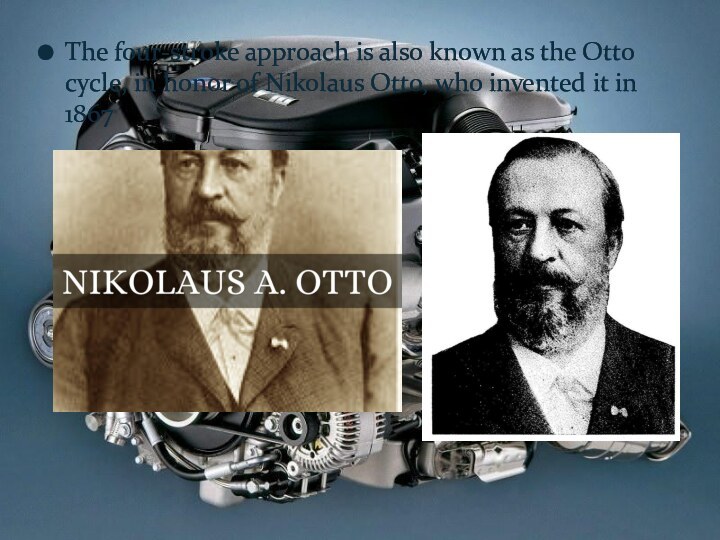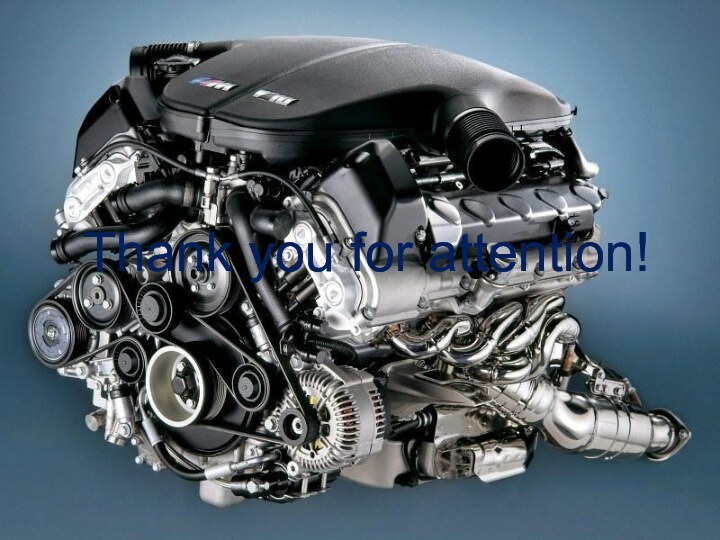- Главная
- Разное
- Бизнес и предпринимательство
- Образование
- Развлечения
- Государство
- Спорт
- Графика
- Культурология
- Еда и кулинария
- Лингвистика
- Религиоведение
- Черчение
- Физкультура
- ИЗО
- Психология
- Социология
- Английский язык
- Астрономия
- Алгебра
- Биология
- География
- Геометрия
- Детские презентации
- Информатика
- История
- Литература
- Маркетинг
- Математика
- Медицина
- Менеджмент
- Музыка
- МХК
- Немецкий язык
- ОБЖ
- Обществознание
- Окружающий мир
- Педагогика
- Русский язык
- Технология
- Физика
- Философия
- Химия
- Шаблоны, картинки для презентаций
- Экология
- Экономика
- Юриспруденция
Что такое findslide.org?
FindSlide.org - это сайт презентаций, докладов, шаблонов в формате PowerPoint.
Обратная связь
Email: Нажмите что бы посмотреть
Презентация на тему Internal combustion engine
Содержание
- 2. The principle behind any reciprocating internal combustion
- 3. Almost all cars currently use what is
- 4. The four-stroke approach is also known as
- 5. Intake stroke Compression stroke Combustion stroke Exhaust stroke The four strokes are:
- 6. 1. The piston starts at the top,
- 7. Then the piston moves back up to
- 8. When the piston reaches the top of
- 9. Once the piston hits the bottom of
- 10. Notice that the motion that comes out
- 11. Скачать презентацию
- 12. Похожие презентации
The principle behind any reciprocating internal combustion engine: if you put a tiny amount of high-energy fuel (like gasoline) in a small, enclosed space and ignite it, an incredible amount of energy is released in the











Слайд 3 Almost all cars currently use what is called
a four-stroke combustion cycle to convert gasoline into motion.
Слайд 4 The four-stroke approach is also known as the
Otto cycle, in honor of Nikolaus Otto, who invented
it in 1867Слайд 6 1. The piston starts at the top, the
intake valve opens, and the piston moves down to
let the engine take in a cylinder-full of air and gasoline. This is the intake stroke. Only the tiniest drop of gasoline needs to be mixed into the air for this to work.1st stroke of the cycle
Слайд 7 Then the piston moves back up to compress
this fuel / air mixture. Compression makes the explosion
more powerful.2nd stroke of the cycle
Слайд 8 When the piston reaches the top of its
stroke, the spark plug emits a spark to ignite
the gasoline. The gasoline charge in the cylinder explodes, driving the piston down.3rd stoke of the cycle
Слайд 9 Once the piston hits the bottom of its
stroke, the exhaust valve opens and the exhaust leaves
the cylinder to go out the tailpipe.Now the engine is ready for the next cycle, so it intakes another charge of air and gas.
4th stoke of the cycle





























